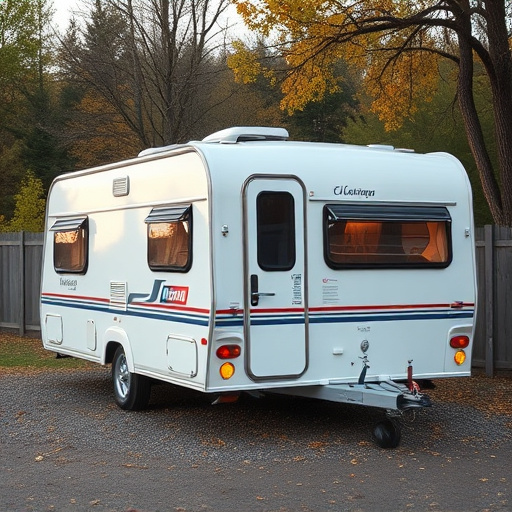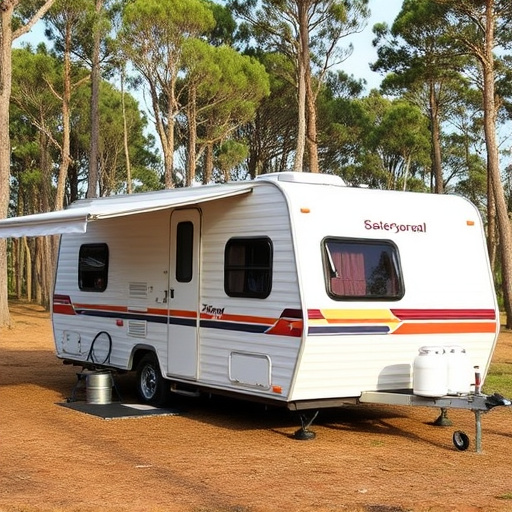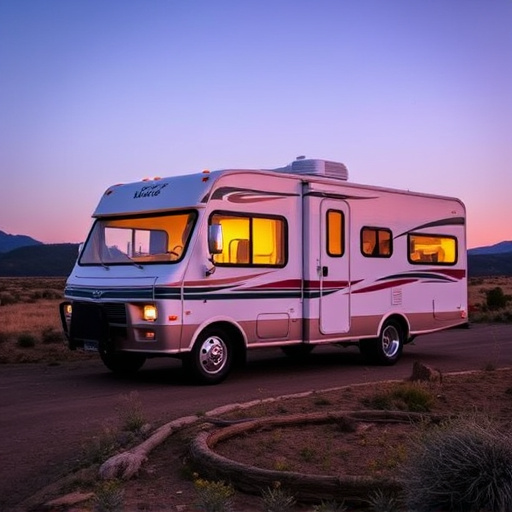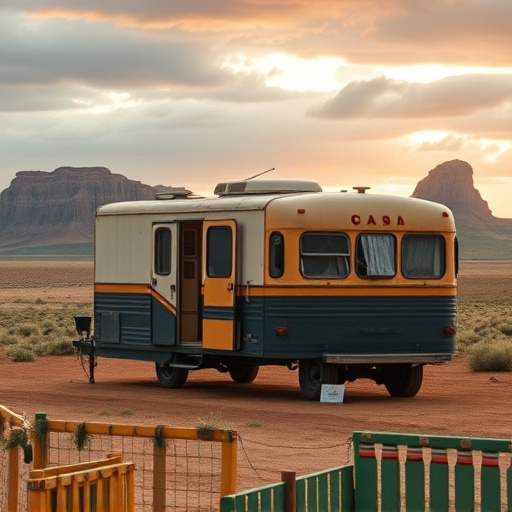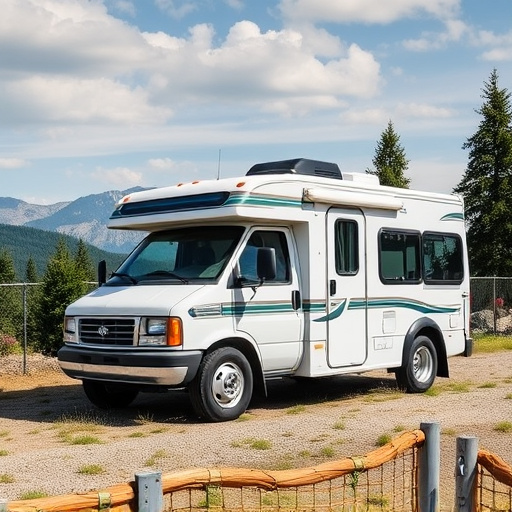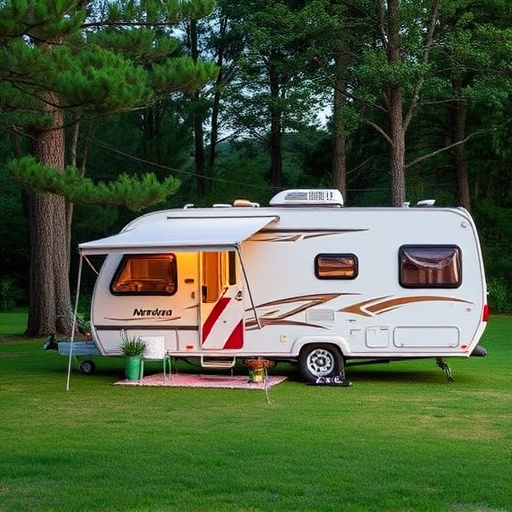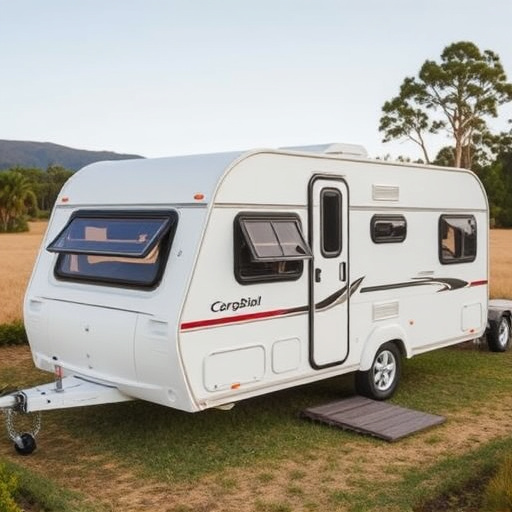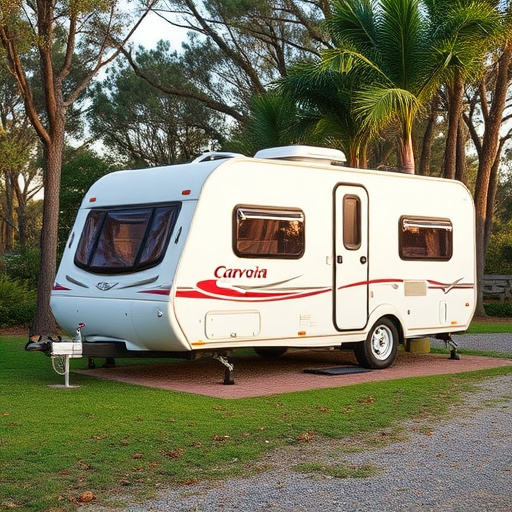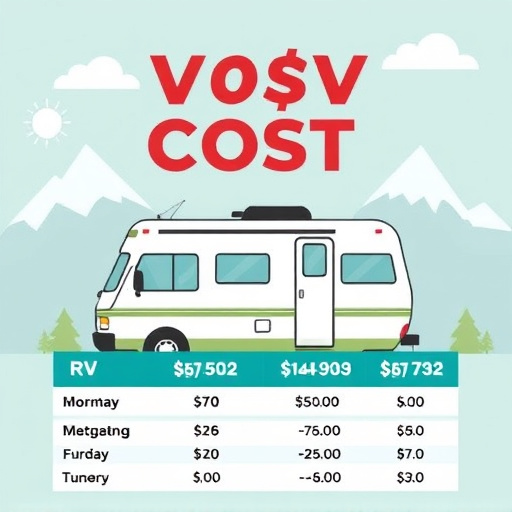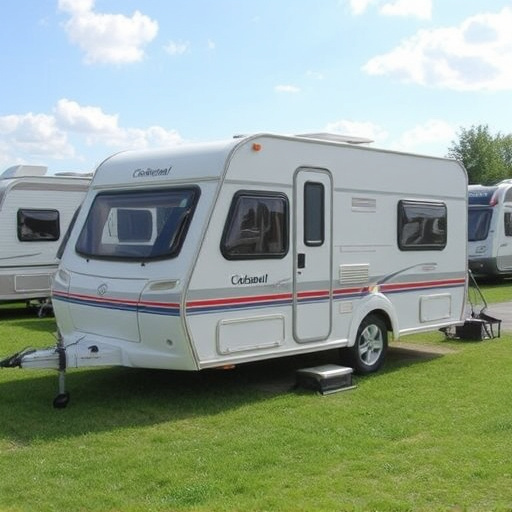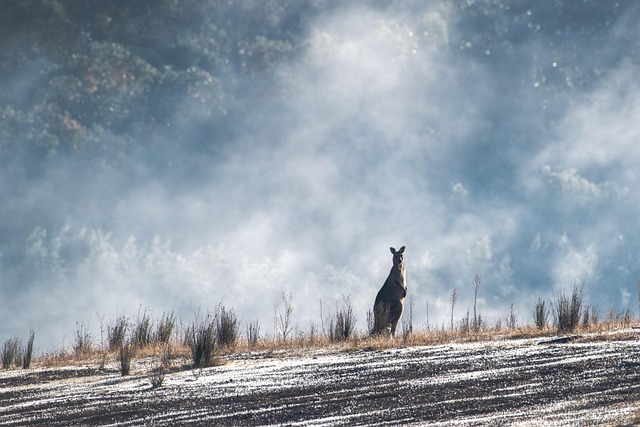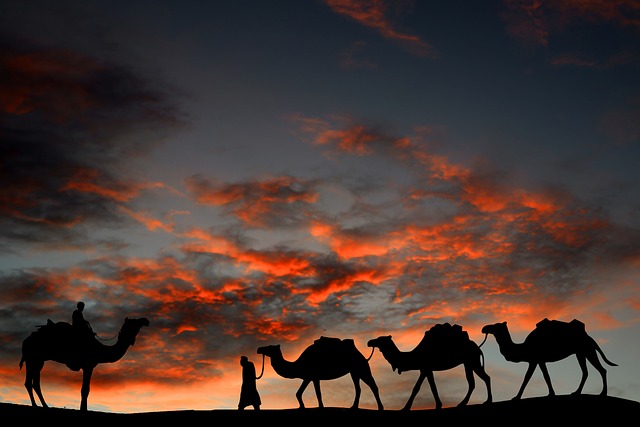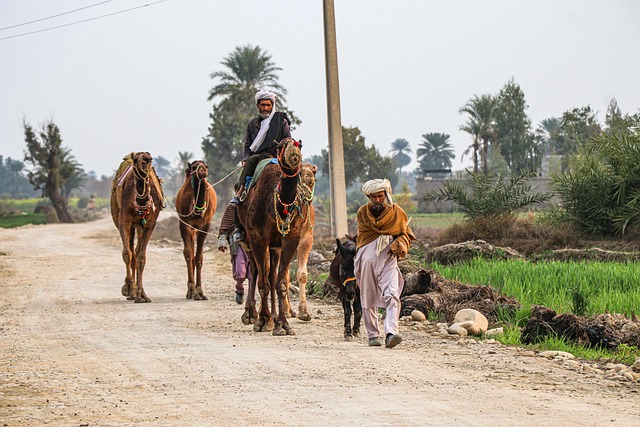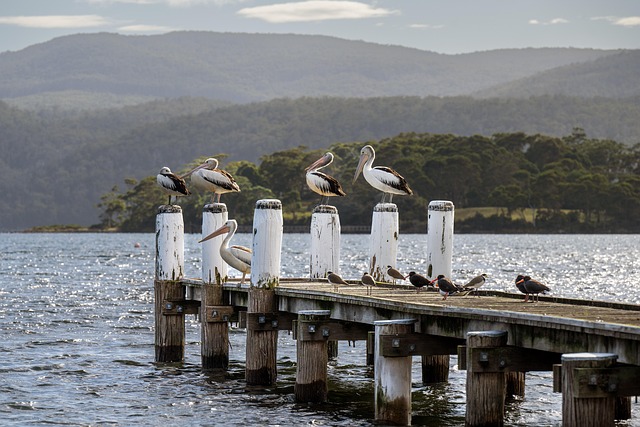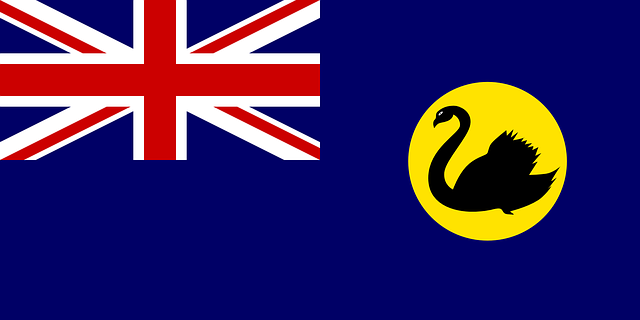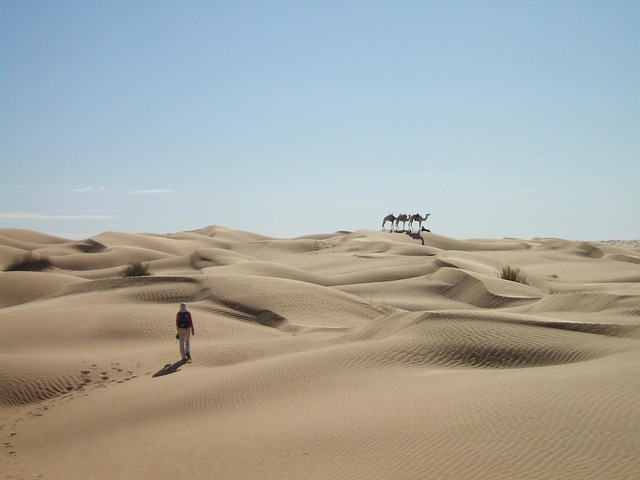Caravan Prices Australia: A Comprehensive Analysis
Introduction
In the vast and diverse landscape of travel and recreation, caravans stand as versatile and beloved modes of accommodation, offering a unique blend of portability and comfort. When we delve into “caravan prices Australia,” we embark on an exploration of a dynamic market that reflects not only economic trends but also the nation’s love affair with outdoor living. This article aims to provide a comprehensive guide, dissecting the factors influencing caravan prices in Australia, their historical evolution, global connections, and future trajectories. By the end, readers will have a profound understanding of this vibrant industry and its significant role in shaping travel experiences.
Understanding Caravan Prices Australia: A Definition and Its Components
Caravan prices Australia refer to the cost structure associated with purchasing and maintaining recreational vehicles designed for travel and camping. These prices are influenced by a myriad of factors, each playing a pivotal role in shaping the overall market dynamics. At its core, a caravan is a self-contained vehicle or trailer equipped with living amenities, including sleeping areas, cooking facilities, and sometimes even entertainment systems. In Australia, the caravan market is diverse, catering to various preferences and budgets, from basic models for weekend getaways to luxurious, fully-fitted homes on wheels.
Key Components of Caravan Prices:
-
Manufacturing and Material Costs: The base price of a caravan is primarily determined by manufacturing expenses, which include material costs, labor, and overheads. In Australia, high-quality construction materials and innovative designs contribute to a wide range of prices.
-
Size and Features: Larger caravans with extra amenities like slide-outs, entertainment systems, or more sleeping spaces generally command higher prices. Features such as water tanks, solar panels, and advanced heating/cooling systems are also price determinants.
-
Brand and Reputation: Established caravan manufacturers with a strong reputation often command premium prices. Brand value, after-sales service, and warranty offerings can significantly impact consumer perception and pricing.
-
Market Demand and Supply: Like any market, caravan prices fluctuate based on supply and demand. Limited editions or models with high-demand features may be priced higher, while over-saturation in certain segments could lead to more affordable options.
-
Resale Value: The Australian caravan market has a significant secondary resale segment. Older models or those with less demand might have lower resale values, impacting their overall ownership costs.
Historical Context and Evolution
The history of caravan prices in Australia mirrors the nation’s growing appreciation for outdoor recreation and travel. Here’s a glimpse into its evolution:
-
Post-World War II Era: After World War II, Australians began exploring recreational vehicle ownership as a means of affordable travel. This period saw the introduction of basic caravans, primarily designed for weekend trips and camping. Prices were relatively low, making caravans accessible to a broader segment of the population.
-
1960s and 70s: The Australian caravan market experienced significant growth during these decades. Technological advancements led to improved comfort and amenities, with manufacturers introducing models featuring better insulation, more efficient heating/cooling systems, and enhanced water management. This era also marked the beginning of specialized caravans tailored to specific activities like fishing, off-roading, or family camping.
-
1980s – 2000s: The late 20th century saw a rise in caravan customization and luxury. Manufacturers began offering models with high-end finishes, entertainment systems, and advanced safety features. This period also witnessed the emergence of larger, more spacious caravans catering to families and groups. Prices started reflecting these enhancements, but consumer demand for quality and comfort continued to drive innovation.
-
21st Century: The digital age has brought new dynamics to the caravan market in Australia. Online marketplaces and e-commerce platforms have made it easier for buyers and sellers to connect, impacting pricing strategies. Furthermore, advancements in materials science have enabled manufacturers to build lighter yet stronger caravans, improving fuel efficiency and handling. Today, Australian consumers have a vast array of options, from budget-friendly models to luxury caravans priced at several hundred thousand dollars.
Global Impact and Trends
Caravan prices Australia are not isolated; they are significantly influenced by global trends and economic connections. Here’s how:
-
International Manufacturing: Many Australian caravan manufacturers source components and materials globally, which can impact pricing. Import tariffs and exchange rate fluctuations may also affect the overall cost structure. However, the local manufacturing base remains strong, ensuring a consistent supply of high-quality caravans.
-
Global Design Trends: International design trends and innovations often find their way into Australian caravans. For instance, European manufacturers’ focus on lightweight construction and energy efficiency has influenced local models, leading to more environmentally friendly and cost-effective options.
-
Cross-Border Trade: The caravan market experiences significant cross-border trade, with Australians importing specialized and luxury models from the United States, Europe, and Asia. This import/export dynamic contributes to a diverse range of prices and product offerings in Australia.
Economic Considerations: Market Dynamics and Investment Patterns
The economic landscape plays a crucial role in shaping caravan prices Australia:
| Economic Factor |
Impact on Caravan Prices |
| Consumer Spending: Strong consumer confidence and disposable income levels can drive up demand, leading to higher prices. |
Increased Demand, Higher Prices |
| Interest Rates: Rising interest rates may impact the cost of borrowing, potentially affecting buyers’ purchasing power and market activity. |
Reduced Sales, Lower Prices (in a cooling market) |
| Fuel Prices: Fluctuations in fuel costs can influence the overall operating expenses for caravan owners, impacting their willingness to invest in larger models. |
Shifting Demand, Price Adjustments |
| Economic Downturns: Recessions or economic uncertainty may lead to reduced consumer spending on discretionary items like caravans. |
Decreased Demand, Price Negotiations |
| Investment Opportunities: Caravans can be seen as an investment asset. During times of economic stability, they may appreciate in value over time. |
High-End Models Maintain or Increase Prices |
Technological Advancements and Their Impact
Technology is a driving force behind the evolution of caravan prices Australia:
-
Material Innovations: Advances in materials science have led to lighter yet stronger construction materials. Fiberglass, aluminum, and composite materials are now widely used, improving fuel efficiency and handling while reducing overall costs for manufacturers.
-
Safety Features: Modern caravans incorporate advanced safety technologies like anti-lock braking systems (ABS), electronic stability control (ESC), and improved collision detection. These features enhance safety and can impact insurance costs, which, in turn, may influence consumer purchasing decisions.
-
Entertainment Systems: The integration of entertainment technology has transformed caravans into mobile recreational hubs. Flat-screen TVs, sound systems, and WiFi connectivity are now standard in many models, appealing to tech-savvy travelers and increasing overall prices.
-
Solar Power and Energy Efficiency: Solar panels, energy-efficient appliances, and advanced battery storage systems are gaining popularity. These features reduce reliance on external power sources and can save owners money over time, making them a valuable addition to any caravan.
Policy and Regulation: Governance of Caravan Prices
The Australian government plays a significant role in regulating the caravan market, ensuring consumer safety and fair trading practices:
-
Motor Home Industry Association (MHIAA): This industry association represents manufacturers and dealers, advocating for industry standards and best practices. They provide guidelines and certifications to ensure product quality and safety.
-
Safety Standards: The Australian government sets strict safety standards for recreational vehicles, including caravans. These standards cover various aspects, from structural integrity to electrical systems and emergency equipment requirements. Compliance with these standards is mandatory and influences manufacturing costs.
-
Consumer Protection Laws: Fair trading practices and consumer protection laws protect buyers’ rights. Regulations against deceptive marketing, unfair contract terms, and price discrimination ensure a transparent market environment.
-
Import/Export Regulations: The Australian Customs and Border Protection Service oversees the import and export of caravans, administering tariffs and ensuring compliance with local standards. These regulations can impact the availability and pricing of imported models.
Challenges and Criticisms: Overcoming Barriers
The caravan industry in Australia faces several challenges that influence price dynamics:
-
High Initial Purchase Costs: One of the primary criticisms is the high upfront cost of purchasing a caravan, which can be a significant barrier for first-time buyers or those on tight budgets. To address this, manufacturers and dealers offer various financing options, lease-to-own programs, and second-hand market alternatives.
-
Resale Value Variability: The secondary resale market for caravans can be unpredictable, with prices fluctuating based on model popularity, age, and condition. This variability may deter some buyers who seek long-term value retention.
Strategies to Overcome:
- Transparent pricing models that clearly outline additional fees and potential resale value depreciation.
- Education programs to help buyers understand the long-term costs and benefits of caravan ownership.
- Development of digital tools for accurate resale value estimation.
Case Studies: Successful Applications and Lessons Learned
Case Study 1: The Rise of Luxury Caravans in Australia
In recent years, Australia has witnessed a boom in luxury caravan manufacturing and sales. Premium brands like ‘Luxury Caravan Co.’ have introduced models featuring high-end finishes, custom interior designs, and advanced amenities. These caravans cater to affluent travelers seeking a home away from home. Price points for these top-of-the-line models can surpass AUD 500,000, reflecting the high demand and willingness of consumers to invest in exceptional experiences.
Lessons Learned:
- Customization and luxury amenities are significant growth areas, appealing to a niche but dedicated customer base.
- High-end branding and quality craftsmanship command premium prices, setting new standards in the industry.
Case Study 2: Off-Grid Caravans for Remote Adventures
Australian adventurers seeking off-grid travel have driven the demand for specialized caravans equipped with solar power, water purification systems, and robust construction for rugged terrain. Companies like ‘Adventure Caravans’ have emerged to cater to this niche market. These vehicles are designed to withstand harsh conditions while providing essential amenities. While prices for these models start at around AUD 150,000, their unique features and target audience ensure strong demand.
Key Takeaways:
- Specialized caravans tailored to specific outdoor activities or terrains can command premium prices.
- Off-grid technology integration enhances functionality and appeals to environmentally conscious buyers.
Future Prospects: Emerging Trends and Strategic Considerations
The caravan market in Australia is poised for continued growth and transformation, driven by several emerging trends:
-
Sustainability and Green Technology: With increasing environmental awareness, there will be a growing demand for energy-efficient caravans equipped with solar panels, battery storage systems, and water recycling facilities. Manufacturers focusing on sustainable practices and technologies will gain a competitive edge.
-
Smart Caravans and Digital Integration: The integration of smart home technology and digital connectivity is set to revolutionize the caravan experience. Features like voice control, automated lighting, and real-time monitoring of vehicle systems will enhance convenience and appeal to tech-savvy travelers.
-
Compact and Multi-Purpose Designs: In response to space constraints in popular camping destinations, manufacturers are exploring compact, multi-purpose models that offer flexibility and efficiency. These designs cater to urban dwellers seeking weekend getaways without sacrificing comfort.
-
Shared Ownership and Rental Platforms: The rise of shared ownership models and online rental platforms could democratize caravan access, making them more affordable for occasional users. This trend may impact pricing strategies as manufacturers consider new revenue streams.
Conclusion: A Vibrant Industry with Endless Possibilities
Caravan prices Australia represent a dynamic interplay of economic factors, technological advancements, and consumer preferences. As the industry continues to evolve, it offers unparalleled opportunities for innovation, recreation, and exploration. From budget-friendly models for weekend escapades to luxury homes on wheels, Australia’s caravan market caters to diverse tastes and budgets.
The future outlook is promising, with emerging trends focused on sustainability, technology integration, and versatile designs. As the industry navigates challenges and adapts to changing consumer demands, it reinforces its position as a vital component of Australia’s outdoor lifestyle and travel culture.
FAQ Section: Addressing Common Concerns
Q: How do I know if a caravan is worth the investment?
A: Consider your intended use, budget, and long-term maintenance costs. Research different models, compare features, and read reviews to ensure the caravan aligns with your needs and financial capabilities.
Q: Are there tax incentives for purchasing a caravan?
A: Yes, in Australia, certain incentives and grants may be available through state and federal governments for the purchase of recreational vehicles, including caravans. Check with local authorities or consult an accountant for detailed information.
Q: How can I ensure the safety of my caravan during travel?
A: Prioritize regular maintenance checks, adhere to load limits, secure loose items, and drive defensively. Always follow safe towing practices and be aware of your vehicle’s capabilities to ensure a safe journey.
Q: What are the potential long-term costs of owning a caravan?
A: Besides the initial purchase price, consider ongoing expenses like registration, insurance, maintenance, storage fees (if not in use), and potential resale value depreciation. Budgeting for these costs is essential for responsible ownership.
Q: How can I find affordable caravan options?
A: Explore second-hand markets, consider entry-level models, or look for manufacturer promotions and discounts. Online platforms and specialized caravan dealerships are excellent resources for finding deals.
Vacationer Caravans offer outdoor comfort and convenience with diverse models ranging from $50K to over $150K. Understanding cost variations, essential amenities, and optional upgrades is key to informed purchasing decisions. Ongoing maintenance…….
Caravan prices in Australia vary greatly due to regional factors like cost of living, market demand, and dealer location. Metropolitan areas like Sydney and Melbourne have higher costs, while rural regions offer more affordable options with limi…….
Vacationer caravans are a top choice for exploring Australia's diverse landscapes, offering a blend of outdoor adventure and comfort at various budgets. Influenced by location, amenities, age, and seasonal trends, their pricing varies from…….
Caravan prices in Australia vary widely, from around AU$40,000 to over AU$200,000, based on size, brand, age, and features. The market offers a diverse range of options, from basic models to luxury caravans with advanced amenities. Pricing also…….
Choosing a Vacationer Caravan involves balancing budget, comfort, and features. With various series catering to different needs and price points, understanding inclusions—from basic accommodation to luxurious upgrades—is key. By comp…….
Vacationer caravans (Recreational Vehicles) vary in type, catering to diverse needs from hands-free exploration to minimalism. Pricing is influenced by size, layout, brand, age, interior design, and exterior features. Luxury options offer spacio…….
Vacationer caravans, including campervans and motorhomes, offer adaptable, comfortable ways to explore new regions with home comforts on wheels. With various sizes (Class B, C, A) and features like bedding, kitchenettes, and storage, they cater…….
Vacationer caravans, or travel trailers, are a popular and flexible option in Australia for exploring diverse landscapes, offering various sizes and amenities from basic to luxurious. Their versatility allows for parking at campsites, caravan pa…….
Vacationer caravans (motorhomes/RVs) offer an affordable and convenient way to explore new destinations with various types and sizes available, each with unique features influenced by size, propulsion type, power sources, and entertainment syste…….
Caravan prices in Australia are influenced by market dynamics including rising demand for outdoor adventures, model, size, quality, and seasonal trends. Prices range from AU$10,000 for basic models to over AU$50,000 for premium caravans, with se…….
Caravan prices in Australia vary greatly due to models, sizes, features, brands, and regional demand. Buyers should consider new vs used options, dealer incentives, and seasonal trends. Top-tier dealers offer competitive prices, financing, and p…….
Exploring caravan types in Australia is essential due to the diverse market, with prices ranging from $10,000 AUD to over $100,000 AUD. Size, construction quality, brand reputation, and amenities significantly impact costs. Popular brands like J…….
In Australia, caravan prices vary widely based on size, features, brand, and quality, with basic models starting at $20K AUD and top-tier options exceeding $100K AUD. Key pricing factors include size, layout, construction quality, optional featu…….
Vacationer Caravans offer a unique way to explore Australia's diverse landscapes while enjoying modern conveniences. Planning is key for an enjoyable caravan trip, with costs varying based on location and season. By strategically booking in…….
Caravan prices in Australia vary widely, influenced by brand reputation, material quality, region, and features, with metropolitan areas generally commanding higher costs. State and territory differences impact pricing, with Western Australia an…….
Caravan prices in Australia vary greatly based on size, brand, location, and added features. Larger, more amenities-rich caravans are pricier, especially in coastal tourist hotspots. Established brands command higher rates, but newer competitors…….
Vacationer Caravans (RVs) offer a popular holiday choice, providing comfort and freedom with various sizes and modern amenities. Official pricing transparency is crucial for stress-free planning, comparing options, and avoiding hidden costs. Cos…….
Caravan prices in Australia vary greatly based on size, features, brand, age, and location. The market offers a diverse range from budget-friendly to luxurious options, with used caravans costing AUD 10k-50k and new models starting at AUD 30k. P…….
Caravan prices in Australia vary greatly based on location, brand, model, and dealer reputation. Regional areas like Victoria offer more affordable options compared to metropolitan hubs like Sydney or Melbourne. Strategic dealers like Vacationer…….
